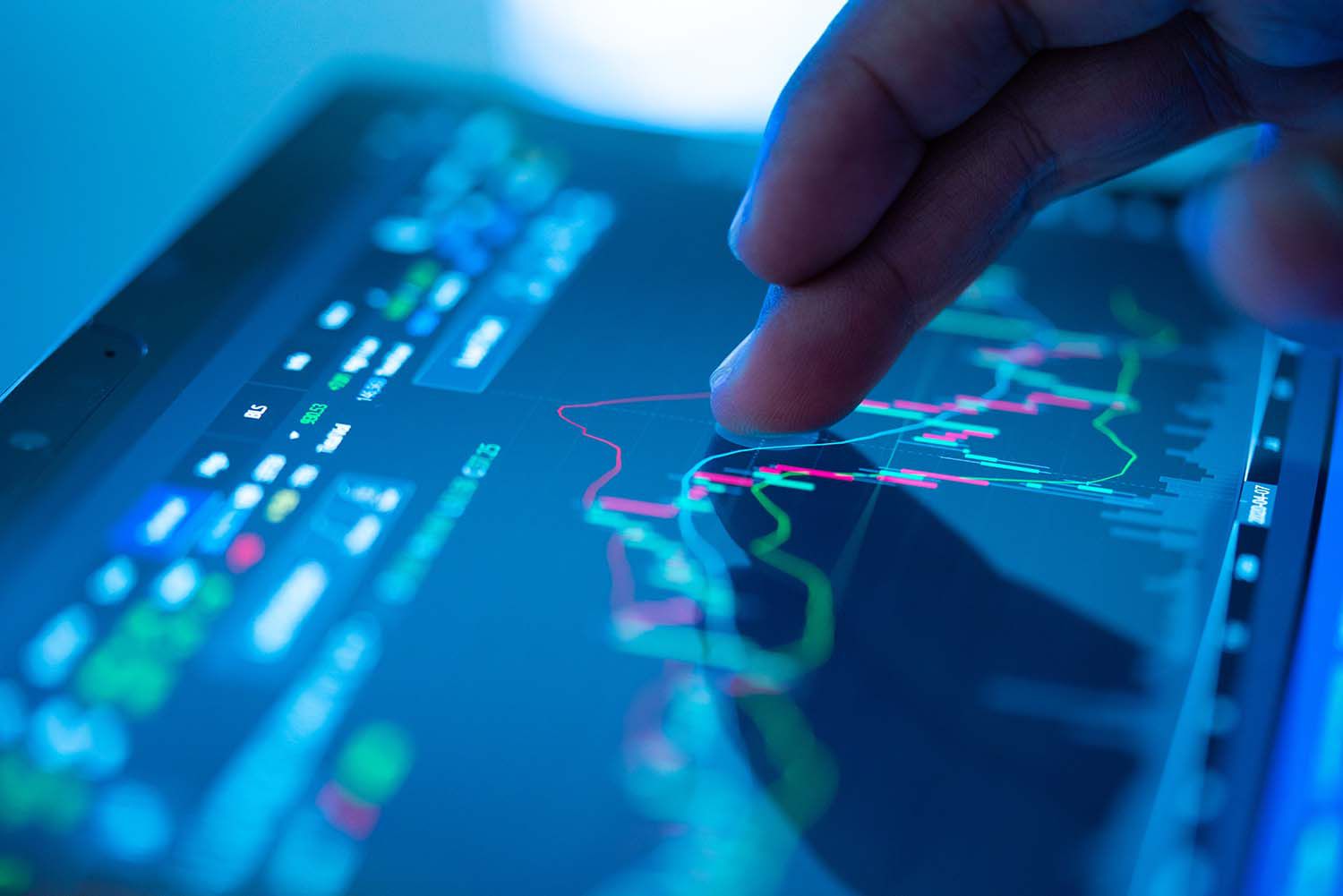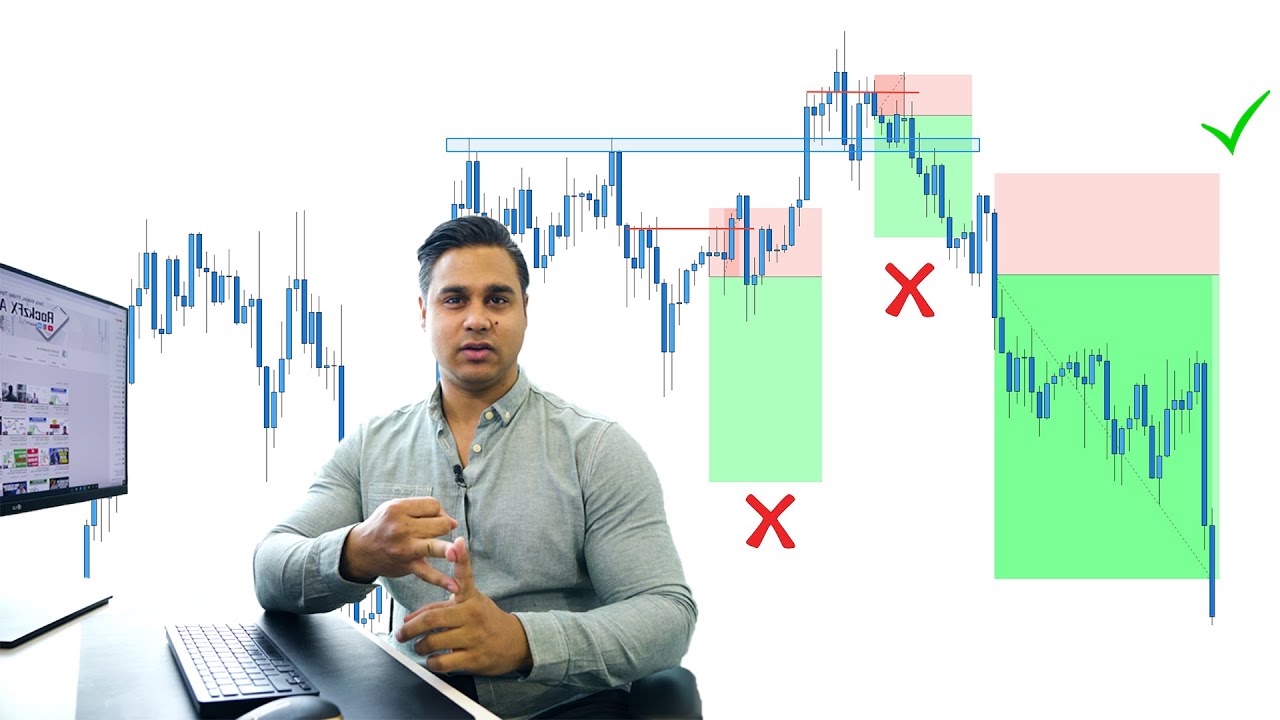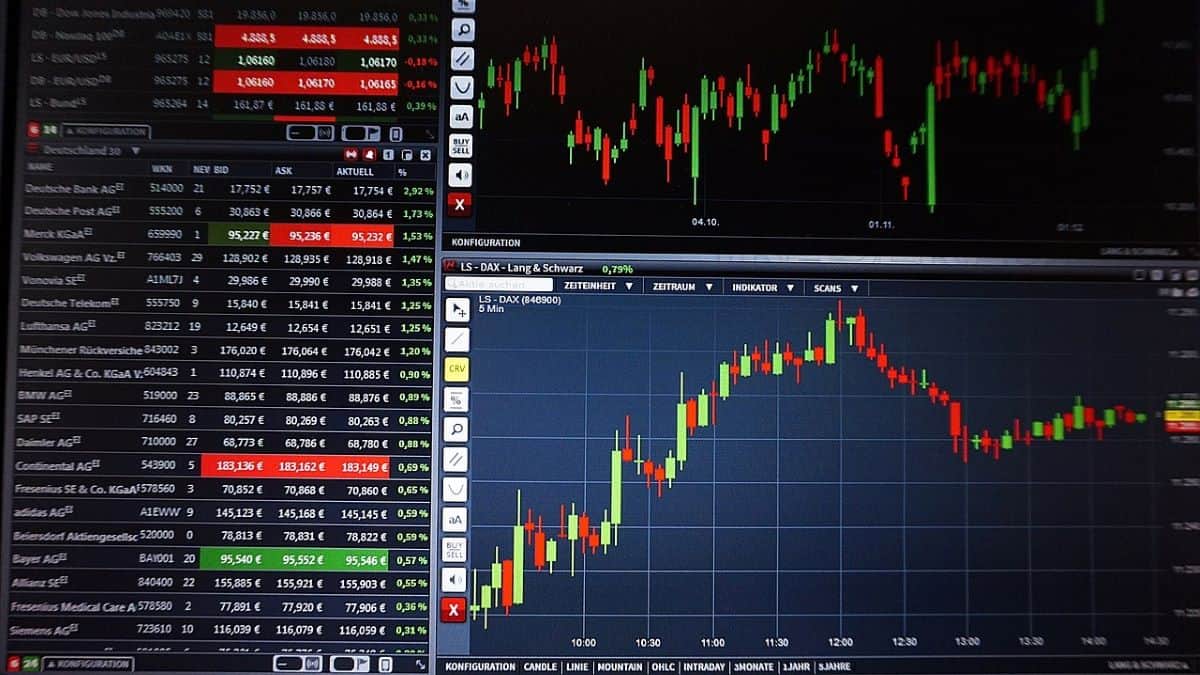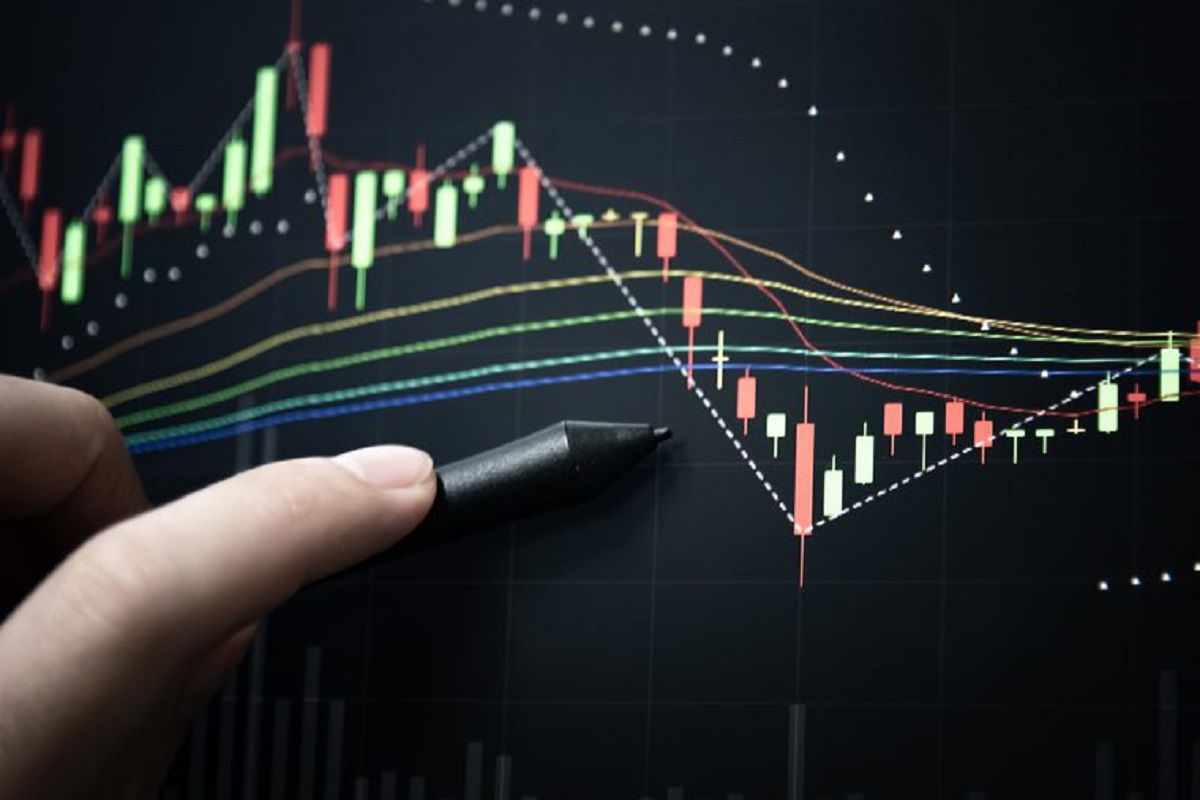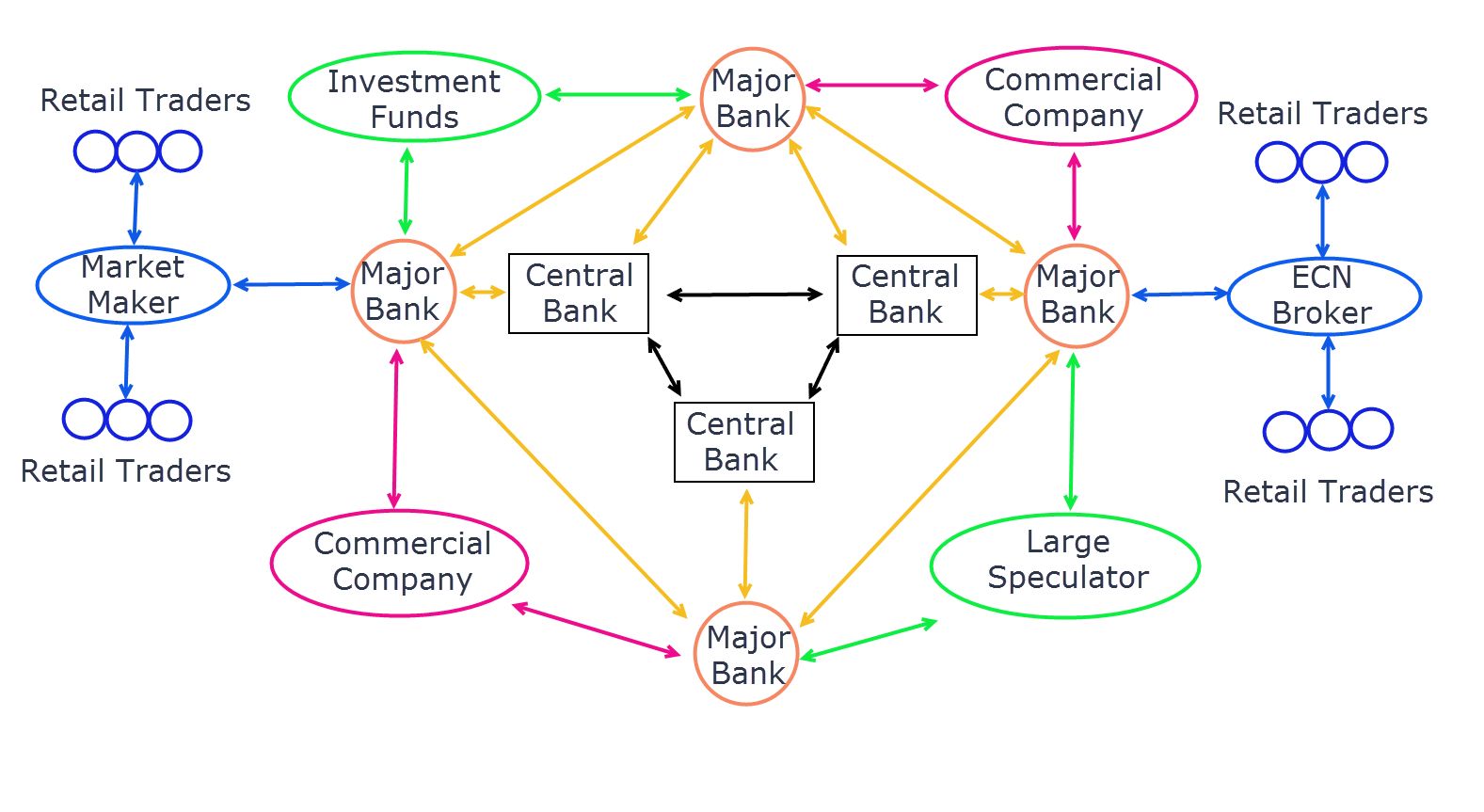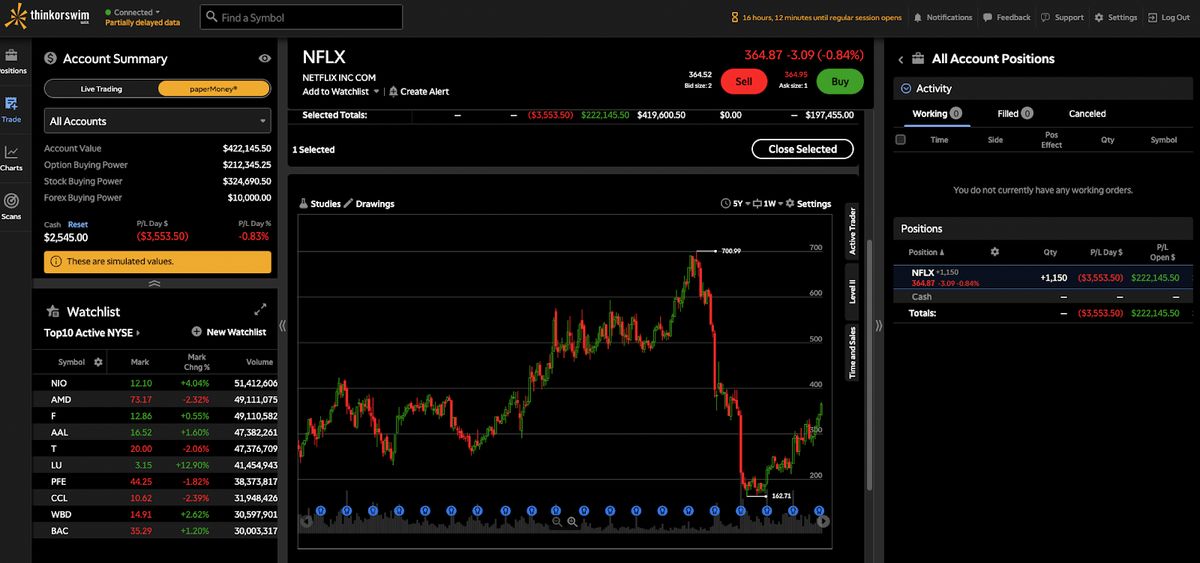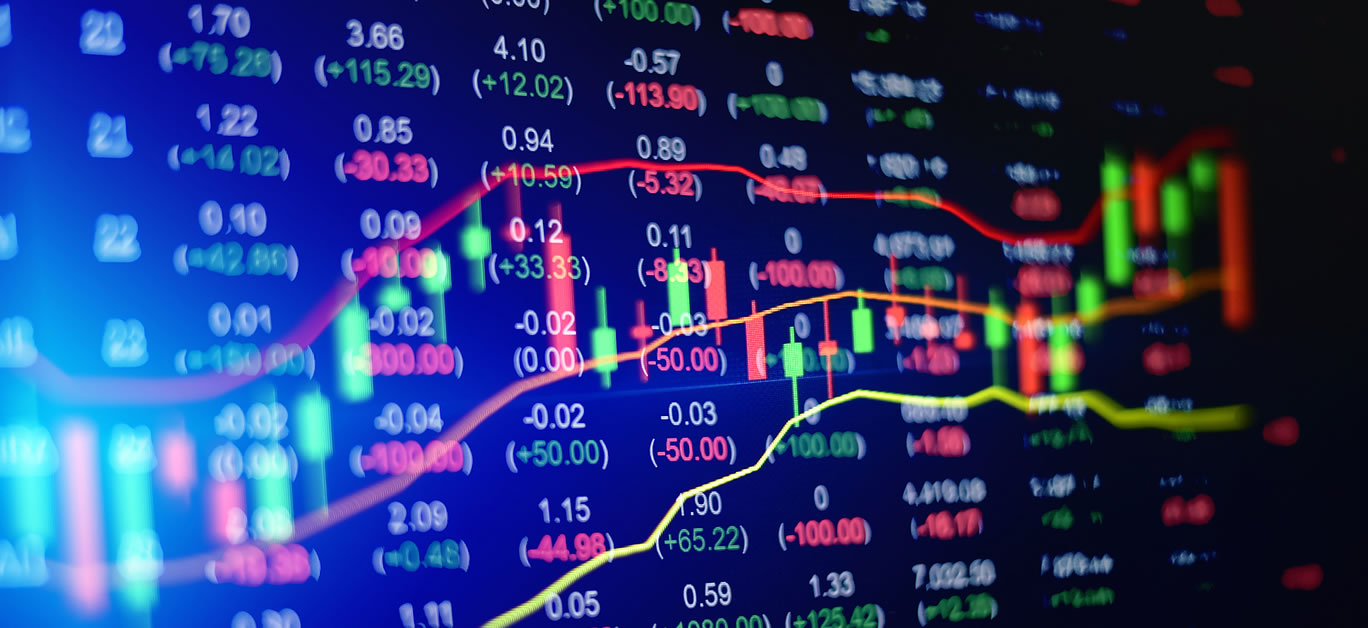Understanding the basics of forex trading
Forex trading, also known as foreign exchange trading, is the process of buying and selling currencies to profit from fluctuations in their exchange rates. It is the largest and most liquid market in the world, with trillions of dollars being traded daily.
Before diving into forex trading, it is crucial to grasp the fundamental concepts. The primary objective is to exchange one currency for another in the hopes of making a profit. For example, if you believe the value of the euro will increase compared to the US dollar, you would buy euros and sell dollars. If your prediction is correct, you can sell the euros back for more dollars.
One of the key aspects of forex trading is understanding currency pairs. Each pair consists of two currencies, with the first currency being the base currency and the second currency being the quote currency. The exchange rate represents how much of the quote currency is needed to purchase one unit of the base currency.
Another critical factor to consider is the concept of leverage. Leverage allows traders to control larger positions with a smaller amount of capital. While leverage can amplify potential profits, it also increases the risk of losses. Therefore, it is essential to properly manage leverage and set strict risk management strategies.
Moreover, forex traders should be aware of the various trading sessions that occur around the world. The forex market operates 24 hours a day, five days a week, with sessions overlapping in different time zones. Understanding the different time frames can help traders capitalize on market volatility and identify suitable trading opportunities.
To gain a comprehensive understanding of forex trading, it is advisable to educate yourself through books, online courses, and tutorials. Familiarizing yourself with tools and terminology such as pips, lots, and margin will help you navigate the forex market more effectively.
Remember, forex trading involves risks and requires discipline and patience. It is crucial to develop a robust trading plan, manage your emotions, and stay updated on relevant global economic news.
Setting up a forex trading account
Setting up a forex trading account is the first step towards entering the exciting world of forex trading. Here are some guidelines to help you get started:
1. Research and choose a reputable forex broker: Conduct thorough research to find a reliable broker that suits your trading needs. Look for brokers regulated by reputable authorities, with competitive spreads, user-friendly trading platforms, and excellent customer support.
2. Complete the registration process: Once you have chosen a broker, visit their website and follow their account opening procedure. This typically involves providing personal information, such as your name, email address, phone number, and proof of identity and residence.
3. Choose the account type: Most brokers offer different types of trading accounts to cater to traders with varying experience levels and financial capacities. Select the account type that aligns with your trading goals and risk tolerance.
4. Fund your account: After your account is approved, you will need to deposit funds into it. Brokers usually offer various deposit methods, such as bank transfers, credit/debit cards, and online payment systems. Choose the most convenient option for you.
5. Familiarize yourself with the trading platform: Most brokers provide a trading platform, such as MetaTrader 4 or 5, which serves as the interface for executing trades. Take the time to explore the platform’s features, such as charting tools, indicators, and order types.
6. Practice using a demo account: Many brokers offer demo accounts that allow you to practice trading with virtual funds. It is advisable to spend some time familiarizing yourself with the platform and testing your trading strategies before risking real money.
7. Develop a trading plan: A trading plan outlines your trading goals, risk tolerance, and strategies. It serves as a roadmap to guide your decision-making process and helps you stay disciplined during trades.
8. Start trading with small positions: Once you feel confident with your trading plan and strategies, you can start live trading with small positions. This allows you to gain real-time trading experience while minimizing the risk of substantial losses.
Remember, setting up a forex trading account is just the beginning. Continuous learning, adapting to market conditions, and staying disciplined are essential for long-term success in forex trading.
Choosing the right forex broker
Choosing the right forex broker is crucial for a successful trading experience. With numerous brokers available, it’s important to consider several factors before making your decision:
1. Regulation and credibility: Ensure that the broker you choose is regulated by reputable financial authorities. Regulation helps protect your funds and ensures that the broker operates within certain guidelines and standards.
2. Trading platform: The trading platform is your gateway to the forex market. It should be user-friendly, stable, and provide a wide range of features and tools for analysis and execution. Popular platforms like MetaTrader 4 and 5 are widely used and offer advanced charting capabilities.
3. Tradable instruments: Check the range of currency pairs and other financial instruments that the broker offers for trading. A diverse selection allows you to take advantage of various market opportunities.
4. Spreads and fees: Compare the spreads offered by different brokers. Lower spreads can reduce your transaction costs and increase your profit potential. Additionally, consider any additional fees or commissions charged by the broker.
5. Leverage and margin requirements: If you plan to use leverage in your trades, ensure that the broker provides suitable leverage options that align with your risk tolerance. Also, be aware of the margin requirements, as they determine the amount of capital you need to maintain in your account.
6. Customer support: Look for brokers that offer reliable customer support. Prompt and efficient support can be crucial, especially during times of market volatility or when facing technical issues.
7. Education and resources: A good broker will provide educational resources, such as webinars, tutorials, and market analysis, to help you enhance your trading skills and stay informed about market developments.
8. Account types: Determine whether the broker offers different types of trading accounts to accommodate your trading needs, such as standard accounts, mini accounts, or Islamic accounts if applicable.
9. Deposit and withdrawal options: Consider the available deposit and withdrawal methods and ensure they are convenient for you. Also, check the broker’s policies regarding fund withdrawals.
10. Reputation and reviews: Research the broker’s reputation and read reviews from other traders. This can provide valuable insights into their reliability, customer service, and overall trading experience.
Take your time to thoroughly research and compare different brokers. Opening a demo account with your shortlisted brokers can also help you test their services and evaluate their trading platforms before committing real funds. The right forex broker will be a trusted partner and play a crucial role in your trading journey.
Learning about currency pairs and their significance
When engaging in forex trading, it is vital to understand currency pairs and their significance. A currency pair consists of two currencies, with one currency being the base currency and the other being the quote currency.
For example, in the EUR/USD currency pair, the euro (EUR) is the base currency, and the US dollar (USD) is the quote currency. The exchange rate represents how much of the quote currency is needed to purchase one unit of the base currency.
The choice of currency pairs to trade depends on various factors, including market conditions, volatility, and individual trading strategies. Understanding the significance of different currency pairs can help you make informed trading decisions.
1. Major currency pairs: Major currency pairs involve the most traded currencies in the world, including the US dollar (USD), euro (EUR), Japanese yen (JPY), British pound (GBP), Swiss franc (CHF), Canadian dollar (CAD), and Australian dollar (AUD). These pairs have high liquidity and tight spreads, making them popular among traders.
2. Minor currency pairs: Minor currency pairs, also known as cross pairs, do not include the US dollar as either the base or quote currency. Examples include EUR/JPY or GBP/CAD. While they have lower liquidity compared to major pairs, they can provide trading opportunities for those looking beyond the more widely traded currencies.
3. Exotic currency pairs: Exotic currency pairs involve one major currency and one currency from an emerging or less common economy. These pairs, such as USD/BRL (US dollar vs. Brazilian real) or EUR/TRY (euro vs. Turkish lira), can be more volatile and have wider spreads, making them suitable for experienced traders willing to take on higher risks.
Each currency pair carries its own unique characteristics. For example, currency pairs involving major currencies may offer stability and tight spreads but may have lower volatility. On the other hand, exotic currency pairs can present more significant price swings and opportunities for lucrative trades.
It is important to conduct thorough research and analysis on each currency pair before initiating a trade. Consider factors such as economic indicators, central bank policies, geopolitical events, and technical analysis when assessing the potential movements and trends of currency pairs.
Monitoring the correlation between currency pairs is also crucial. Some currency pairs may have a positive correlation, meaning they tend to move in the same direction. Others may have a negative correlation, moving in opposite directions. Understanding these dynamics can help diversify your trading positions and manage risk effectively.
By learning about currency pairs and their significance, you can develop a deeper understanding of the forex market and improve your ability to identify profitable trading opportunities.
Exploring different time frames for trading
When it comes to forex trading, understanding and utilizing different time frames is essential to make informed trading decisions. A time frame refers to the length of time used to represent the price movement on a chart. Traders can choose from various time frames, ranging from minutes to months, depending on their trading style and strategy.
Here are some common time frames and their characteristics:
1. Scalping (1-minute to 15-minute charts): Scalping involves executing multiple trades within a short period, aiming to profit from small price movements. Traders who employ this strategy rely on quick analysis and fast execution to capture small gains.
2. Day trading (1-hour to 4-hour charts): Day traders typically enter and exit trades within the same trading day. They focus on shorter-term price movements and aim to capitalize on intraday volatility.
3. Swing trading (4-hour to daily charts): Swing traders hold positions for a few days to weeks and aim to profit from short to medium-term price swings. They use technical analysis and market trends to identify potential entry and exit points.
4. Position trading (daily to monthly charts): Position traders take a longer-term approach and hold positions for weeks to months. They analyze fundamental factors and long-term market trends to capture significant price movements.
Choosing the right time frame depends on various factors, including trading style, available time, risk tolerance, and market conditions. It is crucial to match your time frame with your trading strategy and goals.
Shorter time frames provide more frequent trading opportunities but require constant monitoring and quick decision-making. They are suitable for active traders who can dedicate significant time to trading. On the other hand, longer time frames may have fewer trading opportunities but allow for more relaxed trading and reduced stress.
When analyzing charts, it is essential to consider multiple time frames. For example, if you are considering a trade based on the daily chart, examining the 4-hour and hourly charts can provide additional confirmation or insight into the trade setup.
Furthermore, it is important to be aware of significant economic events or news releases that can impact the market. Higher time frames can be useful for understanding the broader market sentiment and overall trend, while shorter time frames can help fine-tune entries and exits.
Regardless of the time frame chosen, developing a solid trading plan, using proper risk management, and staying disciplined are key to achieving success in forex trading.
Understanding market analysis techniques
Market analysis is a crucial aspect of forex trading. It involves studying and interpreting market data to make informed trading decisions. There are two main types of market analysis: technical analysis and fundamental analysis.
1. Technical analysis: Technical analysis focuses on studying historical price movements and using various tools and indicators to predict future price direction. Traders who use technical analysis believe that historical price patterns tend to repeat themselves. They analyze charts, patterns, trends, and indicators such as moving averages, support and resistance levels, and oscillators to identify potential buy or sell signals.
2. Fundamental analysis: Fundamental analysis involves examining economic and political factors that influence currency values. Traders who use fundamental analysis analyze factors such as interest rates, economic indicators, geopolitical events, and central bank policies to assess the intrinsic value of a currency. This analysis helps traders understand broader market trends and can provide insights into potential long-term price movements.
It is important to note that both technical and fundamental analysis can be used together to gain a comprehensive view of the market.
Technical analysis is widely used by forex traders due to its simplicity and effectiveness in identifying short-term trading opportunities. Traders use various chart patterns, trend lines, and indicators to determine entry and exit points. Additionally, they may use tools like Fibonacci retracements and pivot points to gauge potential levels of support and resistance.
On the other hand, fundamental analysis is essential for long-term traders who aim to capitalize on broader market trends driven by economic and geopolitical events. Traders use economic calendars to monitor important news releases and economic indicators that can impact currency values. By staying informed about monetary policy decisions, employment data, GDP reports, and other influential factors, traders can make more accurate predictions about future currency movements.
It’s worth mentioning that market sentiment analysis is another aspect of market analysis. It involves gauging the overall mood of traders towards a particular currency or the market as a whole. Sentiment analysis can be done through various methods, including monitoring news sentiment, social media sentiment, or using specialized sentiment indicators.
Ultimately, choosing the right market analysis technique depends on your trading style, preferences, and time horizon. Some traders may rely more on technical analysis, while others may base their decisions primarily on fundamental analysis. It is also important to adapt your analysis based on the ever-changing market conditions and to continuously educate yourself to improve your analysis skills.
Applying technical analysis in forex trading
Technical analysis is a widely used methodology in forex trading that involves studying historical price data and using various tools and indicators to make trading decisions. It allows traders to identify trends, patterns, and potential price reversals to determine optimal entry and exit points for trades.
Here are some key concepts and techniques involved in applying technical analysis in forex trading:
1. Chart patterns: Chart patterns are visual representations of price movements that can provide valuable insights into future price direction. Common chart patterns include head and shoulders, double tops and bottoms, triangles, and flags. Traders use these patterns to anticipate potential breakouts or reversals in the price.
2. Trend lines: Trend lines are drawn on a price chart to connect a series of higher lows (uptrend) or lower highs (downtrend). They help identify the overall direction of the market. When price retraces and touches the trend line, it can act as a support or resistance level, providing potential trading opportunities.
3. Moving averages: Moving averages are used to smooth out price data and identify trends. The most commonly used types of moving averages are the simple moving average (SMA) and the exponential moving average (EMA). Traders analyze the relationship between the price and moving averages to identify trend reversals or confirm trends.
4. Support and resistance levels: Support levels are price levels at which buying pressure exceeds selling pressure, causing the price to bounce back up. Resistance levels are price levels at which selling pressure exceeds buying pressure, causing the price to stall or reverse. Traders use support and resistance levels to identify potential entry and exit points.
5. Oscillators: Oscillators, such as the Relative Strength Index (RSI) and Stochastic Oscillator, help traders identify overbought and oversold conditions in the market. These indicators can provide signals of potential trend reversals when price reaches extreme levels.
6. Fibonacci retracements: Fibonacci retracements are based on a mathematical sequence that identifies potential support and resistance levels in a trend. Traders use these levels to determine potential price target areas or areas of potential price reversals.
It’s important to note that while technical analysis can be a powerful tool, it is not foolproof. It is always advisable to combine technical analysis with other factors, such as fundamental analysis and market sentiment, to make well-informed trading decisions.
Furthermore, it’s crucial to practice proper risk management and use appropriate stop-loss orders to protect against potential losses. Technical analysis should be used as a tool for identifying potential trading opportunities, but risk management is vital for preserving capital.
Lastly, continuous learning and practice are key to becoming proficient in applying technical analysis. Through experience and observation, traders can refine their analysis skills and develop their own trading strategies based on technical indicators and patterns.
Utilizing fundamental analysis in forex trading
Fundamental analysis is a crucial approach in forex trading that involves analyzing economic, political, and social factors to assess the intrinsic value of currencies. This type of analysis aims to understand the underlying forces that drive currency movements and can provide valuable insights for making trading decisions.
Here are some key aspects to consider when utilizing fundamental analysis in forex trading:
1. Economic indicators: Economic indicators provide important insights into the health and performance of an economy. Traders closely monitor indicators such as Gross Domestic Product (GDP), employment data, inflation rates, interest rates, and consumer sentiment to gauge the overall strength or weakness of a currency.
2. Central bank policies: Central banks play a significant role in a country’s monetary policy. Traders analyze statements and decisions made by central banks, including interest rate decisions and quantitative easing programs. Changes in monetary policy can have a substantial impact on currency values.
3. Geopolitical events: Geopolitical events, such as elections, political unrest, trade disputes, or natural disasters, can have an immediate and significant impact on currency markets. Traders need to stay informed about global political developments and assess their potential implications on currency values.
4. Market sentiment: Market sentiment refers to the overall attitude and perception of traders towards a particular currency or the market as a whole. Traders analyze news sentiment, investor sentiment indexes, and social media sentiment to gauge market sentiment. Understanding market sentiment can help identify market trends and reversals.
It’s important to remember that fundamental analysis is a long-term approach and may not provide precise timing for short-term trading decisions. However, it can help traders identify long-term trends and make informed decisions regarding position trades.
Traders utilizing fundamental analysis should constantly monitor economic calendars and news releases and stay updated on economic and geopolitical events that can impact currency values. This information can help traders anticipate potential market moves and adjust their positions accordingly.
Additionally, combining fundamental analysis with technical analysis can provide a more comprehensive view of the market. By understanding both the underlying fundamentals and technical patterns, traders can make more informed trading decisions that align with the broader market sentiment.
Remember, fundamental analysis requires continuous learning and understanding of complex economic factors. It’s important to stay updated on economic news and indicators, practice proper risk management, and adapt your trading strategies based on changing market conditions.
Developing a trading strategy
Developing a trading strategy is crucial for forex traders as it provides a structured approach to the market and helps guide their decision-making process. A well-defined trading strategy can increase consistency and improve the chances of profitable trades. Here are some key steps to consider when developing your trading strategy:
1. Define your trading goals: Start by setting clear and realistic goals for your trading. Identify whether you want to trade for short-term profits or long-term growth, and determine the level of risk you are willing to take.
2. Choose a trading style: Select a trading style that suits your personality, time availability, and risk tolerance. Common trading styles include day trading, swing trading, and position trading. Each style has its own unique characteristics and requires different levels of time and commitment.
3. Set risk management parameters: Establish risk management rules to protect your capital. Determine the maximum amount you are willing to risk on each trade, as well as your target profit levels. Use stop-loss orders to limit potential losses and adhere to proper position sizing techniques.
4. Select suitable indicators and tools: Based on your trading style and goals, identify technical indicators or analytical tools that align with your strategy. This could include moving averages, trendlines, Fibonacci retracements, or oscillators. Experiment with different tools and find ones that work best for you.
5. Develop entry and exit rules: Define clear criteria for entering and exiting trades. This could be based on specific chart patterns, indicator signals, or a combination of factors. Ensure your entry and exit rules are objective and avoid making impulsive decisions based on emotions.
6. Backtest and refine your strategy: Use historical price data to backtest your strategy. This involves applying your strategy to past market conditions to assess its performance. Analyze the results and make adjustments as necessary to improve the strategy’s effectiveness.
7. Demo trade and evaluate: Practice your trading strategy on a demo account to gain valuable experience and evaluate its performance in real-time market conditions. Keep a trading journal to track your trades, analyze the outcomes, and identify areas for improvement.
8. Adapt to changing market conditions: The forex market is dynamic and constantly evolving. Review and adapt your trading strategy as market conditions change. Stay updated on relevant news and economic events that can impact currency values.
Remember, consistency and discipline are key to successful trading. Stick to your trading strategy, avoid emotional decision-making, and always follow your risk management rules. Continuous practice, analysis, and adjustment will help refine your strategy over time.
Managing risk in forex trading
Managing risk is paramount in forex trading and is essential for long-term success. While forex trading can be highly profitable, it also carries inherent risks. Implementing effective risk management strategies can help protect your capital and minimize potential losses. Here are some key principles to consider when managing risk in forex trading:
1. Set risk tolerance: Determine your risk tolerance level based on your trading capital, financial goals, and personal circumstances. Avoid risking more than a certain percentage of your trading account on each trade. A commonly recommended limit is 1-2% of your account balance per trade.
2. Use stop-loss orders: Always use stop-loss orders to automatically exit a trade if the market moves against you. Stop-loss orders help limit potential losses and protect your capital. Place the stop-loss order at a level that makes sense based on your analysis and risk tolerance.
3. Employ proper position sizing: Position sizing refers to determining the appropriate position size based on your stop-loss level and risk tolerance. Avoid risking too much on a single trade by carefully calculating your position size. This ensures that a single trade does not have a significant impact on your overall trading account.
4. Diversify your trades: Avoid concentrating too much of your capital on a single currency pair or trade. Diversification helps spread the risk and reduce the potential impact of a single trade going against you. Explore different currency pairs and consider different trading strategies to diversify your portfolio.
5. Avoid overtrading: Overtrading is a common mistake that can lead to excessive risk-taking and poor decision-making. Stick to your trading plan and avoid taking impulsive trades that do not align with your strategy or meet your risk criteria. Quality over quantity is key.
6. Stay updated on market events: Keep track of economic news releases, central bank announcements, and other market-moving events. Sudden market volatility and unexpected news can dramatically impact currency prices. Being aware of upcoming events allows you to stay cautious and adjust your trading positions accordingly.
7. Continuously educate yourself: Forex markets are dynamic and ever-changing. Stay informed about new trading techniques, risk management strategies, and market trends. Continuously educate yourself and adapt your risk management approaches accordingly.
8. Keep emotions in check: Emotions can cloud judgment and lead to impulsive decisions. Successful traders maintain discipline and stick to their risk management rules, regardless of market fluctuations or emotional impulses.
Remember, managing risk is an ongoing process in forex trading. Regularly assess and evaluate your risk management practices, and be prepared to make adjustments as needed. By effectively managing risk, you can protect your trading capital and create a foundation for long-term success.
Practicing with demo accounts
Practicing with demo accounts is an essential step for forex traders, especially for beginners. Demo accounts allow traders to gain practical experience in a risk-free environment before venturing into live trading. Here’s why practicing with demo accounts is crucial:
1. Learn and understand the trading platform: Demo accounts provide an opportunity to familiarize yourself with the trading platform offered by your chosen broker. This includes understanding the functionality of the platform, placing trades, using technical analysis tools, and managing orders.
2. Test trading strategies: Demo accounts allow you to test various trading strategies without risking real money. You can practice different entry and exit points, test the effectiveness of technical indicators, and assess the overall performance of your trading strategy.
3. Explore different currency pairs: Demo accounts provide access to a wide range of currency pairs. You can experiment with different pairs, understand their characteristics, and identify the ones that align with your trading style and strategy.
4. Develop discipline and risk management skills: Trading in a demo account helps you develop discipline and proper risk management techniques. You can practice setting stop-loss orders, adjusting position sizes, and adhering to risk tolerance levels without any financial risk.
5. Understand market dynamics: Demo accounts allow you to observe and understand how the forex market behaves in real-time. You can monitor price movements, analyze market trends, and gain insights into the impact of economic news and events on currency prices.
6. Assess trading psychology: Trading in a demo account provides an opportunity to assess your trading psychology, including how you handle winning and losing trades, manage emotions, and make rational decisions. This self-awareness is essential for successful trading.
While demo trading can be valuable, it’s important to keep in mind that it does not fully replicate the experience of live trading. The absence of real money and emotions may impact decision-making. Therefore, it’s crucial to transition from demo trading to live trading gradually, once you have gained confidence and consistency in your trading strategy.
Use your time practicing in a demo account effectively. Treat it as a learning opportunity, make note of your successes and failures, and use it to refine your trading approach. Aim to achieve consistent profitability and a thorough understanding before moving on to live trading.
Practicing with demo accounts allows you to build a strong foundation in forex trading and gain the skills and confidence necessary for success in the live markets. Make the most of this invaluable tool to hone your skills and strategies before risking real money.
Starting small with live trading
After gaining experience and confidence through demo trading, it’s time to transition to live trading with real money. However, it is crucial to start small to manage the risks effectively and gradually increase your trading activity. Starting small with live trading offers several benefits:
1. Manage risk: Starting with a small trading account allows you to limit potential losses while gaining practical experience. By risking a smaller portion of your capital, you can withstand potential losses and keep emotions in check, leading to more rational trading decisions.
2. Gain real trading experience: Live trading introduces the element of real market conditions, including slippage, execution speed, and market liquidity. Starting with small trades allows you to adapt to live trading dynamics while minimizing the financial impact of potential mistakes.
3. Assess trading strategies: Live trading provides valuable insights into the performance of your trading strategies under real market conditions. You can evaluate whether the strategies that worked well in demo trading are effective in live markets and make necessary adjustments as needed.
4. Develop discipline and emotional control: Trading with real money involves real emotions. Starting small helps you develop discipline and emotional control as you experience the psychological impact of gains and losses. It allows you to refine your trading psychology and learn from your emotions while minimizing the financial consequences of impulsive decisions.
5. Monitor and adjust risk management: Live trading provides an opportunity to fine-tune your risk management techniques. You can assess whether your position sizing and stop-loss levels are appropriate and make adjustments based on live market performance. This allows you to better align your risk management with market conditions.
6. Continuously learn and improve: Live trading exposes you to real-time market developments and fluctuations. It presents opportunities to learn from your trades, identify strengths and weaknesses, and make necessary adjustments to improve your trading skills and profitability.
It is important to set realistic expectations when starting small with live trading. Treat it as a learning and growth phase rather than focusing solely on profits. The primary goal is to gain experience, strengthen your skills, and refine your trading strategies.
Remember to maintain proper risk management even when starting small. Use stop-loss orders, diversify your trades, and avoid overtrading. Keep a trading journal to track your trades, analyze your performance, and identify areas for improvement.
As you gain confidence and consistently achieve positive results with small trades, you can gradually increase your position sizes and exposure. It is a progression that allows you to grow your trading account gradually while managing risk effectively.
Starting small with live trading sets the foundation for long-term success in the forex market. It helps you understand the nuances of live trading, evaluate your trading strategies, and develop the discipline and skills necessary to navigate the dynamic nature of the forex market.
Continuing education and continuous improvement
Continuing education and continuous improvement are essential for success and sustainability in forex trading. The forex market is dynamic and constantly evolving, so it’s crucial to stay updated with market trends, new trading techniques, and improve your trading skills. Here’s why continuing education is vital:
1. Keep up with market developments: The forex market is influenced by various factors, including economic news, geopolitical events, and central bank policies. By staying informed about market developments, you can adapt your trading strategies and take advantage of potential trading opportunities.
2. Enhance trading skills: Continuously educating yourself allows you to improve your trading skills and knowledge. Explore different trading strategies, study technical analysis tools and indicators, and experiment with different approaches. The more you learn, the better equipped you’ll be to make informed trading decisions.
3. Adapt to changing market conditions: The forex market is influenced by changing financial landscapes, economic shifts, and technological advancements. Continuous education helps you adapt to these changes and refine your trading strategies to remain relevant and profitable.
4. Expand your trading toolkit: Explore new trading tools, platforms, and technologies to streamline your trading process and gain a competitive edge. Stay updated with the latest software, trading algorithms, and execution methods that can enhance your trading efficiency.
5. Learn from experienced traders: Engage with experienced traders through mentorship programs, online communities, or trading seminars. Learning from traders who have already achieved success can provide valuable insights, tips, and strategies to enhance your own trading performance.
6. Analyze your trading performance: Continuously improving as a trader requires analyzing your trading performance. Review your trades, identify patterns, and assess the effectiveness of your strategies. By identifying strengths and weaknesses, you can make necessary adjustments and refine your approach.
7. Stay disciplined and focused: Forex trading requires discipline, focus, and a growth mindset. Continuously learning helps you stay motivated and committed to your trading goals. It fosters a mindset of continuous improvement and a willingness to adapt to new market conditions.
Seek out educational resources such as books, online courses, webinars, and reputable trading websites to expand your knowledge. Attend trading conferences and seminars to network with other traders and stay updated with industry trends. Engage in discussions with fellow traders to share ideas and insights.
Remember, forex trading is a journey of continuous learning and improvement. Embrace new knowledge, adapt to changes, and consistently challenge yourself to become a better trader. By investing in your education, you increase your chances of long-term success in the forex market.







